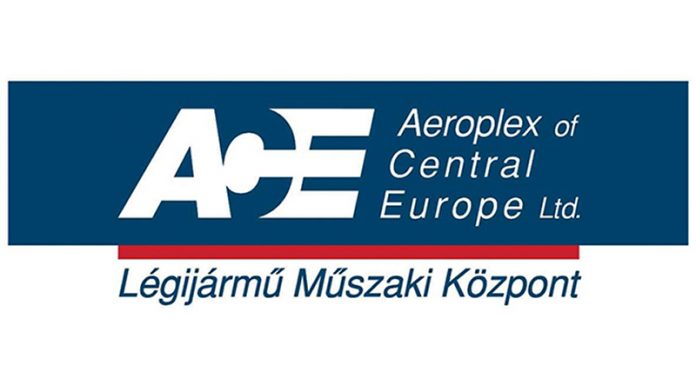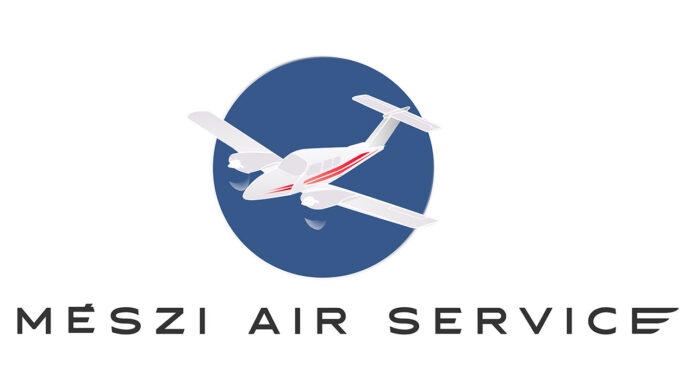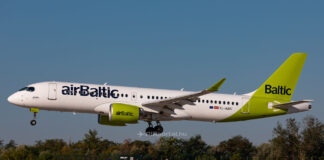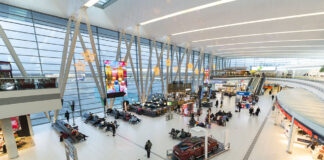Még zöldebb módón fognak készülni a Boeing 777-esek. Az amerikai repülőgépgyár most bevezetett új eljárási rendje szerint az újonnan készülő szélestörzsű Boeing 777-esek még környezetkímélőbb módón fognak átadásra kerülni a megrendelők számára. A Boeing 777-es gyártási programjában immáron 10 olyan elem kerül bevezetésre, amellyel éves szinten összesen 2500 tonna szén-monoxid kibocsátását, valamint 300000 gallon kerozin elhasználását lehet megspórolni. Az ebben az eljárásban készülő első Boeing 777-es az Air New Zealand novemberi jártású, megnövelt hatótávolságú B777-300ER típusú repülőgépe volt.
A legnagyobb üzemanyagmegtakarítást a hajtóműtesztek, valamint a közvetlen, az átadási előtti berepülések racionalizálásával tudja elérni a Boeing. A CO2 kibocsátást illetően pedig nagyon fontos szerepe van a repülőgép festése közben alkalmazott eljárásoknak, illetőleg az üzemben alkalmozott eszközöknek is. A repülőgépfestés során az egyik legfontosabb újjítás, amelynek alkalmazásával készült el az új-zélandi nemzeti légitársaság „triplahetese’ is, a krómmentes alapozó használata. A 777-es gyártási programjában ez az alapozási eljárás egyelőre még csak opcionális, bár az Air New Zealand már jelezte, hogy minden további Boeing 777-esét így kívánja átvenni.
A Boeing repülőgépgyár hivatalos közleménye további részletekkel és videó-bemutatóval:
The Boeing 777 program is implementing 10 initiatives that will eliminate 5.5 million pounds CO2 emitted and 300,000 gallons of jet fuel used annually during the 777 delivery process. The first customer to benefit from all 10 of the initiatives is Air New Zealand, which took delivery of a 777-300ER (extended range) jetliner Nov. 7.
„Air New Zealand is excited to participate,” said Duncan Mairs, Air New Zealand’s technical manager currently based in Seattle overseeing the airline’s 777-300ER deliveries. „We have a wide range of environmental initiatives under way across the business. Being able to find ways to lessen the environmental impact of building an airplane is another excellent step on our journey to becoming the world’s most environmentally sustainable airline,” he said.
During the 20-day paint and delivery process, Boeing workers incorporated new processes including reducing the number of times potable water and hydraulic filters are changed, using chromate-free primer in the painting process, and enhancing recycling and use of electric carts instead of gas-powered vehicles. Watch a video to see the energy-saving ideas in action: http://bcove.me/gcdn6c0v.
„A team of employees identified redundancies in testing,” said Jeff Klemann, vice president Everett Delivery Center. „One idea was to eliminate engine-run tests already performed by GE, the 777’s engine manufacturer. This will result in a reduction of 1.4 million pounds of CO2 in 2012 as well as less community noise and emissions.”
The team also improved flight planning efficiency for pre-delivery test flights. Reducing fuel loads reduces airplane weight, which improves fuel economy. By careful pre-planning flight crews also are able to reduce flight times. The flight-planning initiatives will save a total of 193,155 gallons of jet fuel annually.
The chrome-free primer used on the recently delivered Air New Zealand jet reduces the environmental impact of the paint and reduces potential health and safety risks during painting. It also eliminates the need for special handling of paint waste and clean-up, and designated off-site disposal areas. These advantages also provide benefit when the airplane is prepared for repainting.
Nine of the environmental initiatives are now implemented on all 777 airplanes delivered. Use of chrome-free primer is optional. Air New Zealand will use chrome-free primer on future 777-300ER deliveries.
Forrás: Boeing Media (2011. november 21.)














